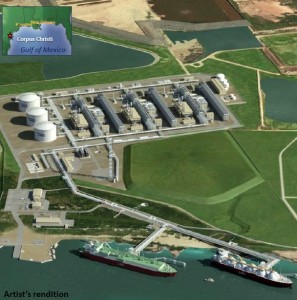Cheniere Energy is closer to making a decision on final investment in its Corpus Christi Liquefaction project.
Cheniere received a turnkey construction commitment priced at $800/tonne of liquefaction. The engineering and construction company Bechtel submitted the contract in September.
Cheniere has plans for up to six trains with 4.5 mtpa capacity each in Corpus Christi, but initial plans call for three trains with capacity of 13.5 mtpa (~1.8 Bcf/d).
At $800/tonne, the construction costs will be $800 x 13,500,000 tonnes = $10.8 billion. Add financing costs and the price tag will easily reach $12 billion.
Read:Port of Corpus Christi Booms on the Back of Eagle Ford Growth
Construction contracts are negotiated early in the process, but a final investment decision will be made by year-end 2014. The decision will come after commercial export contracts are agreed, all regulatory approvals are received, and financing is in order.
Read the company's full third quarter press release at cheniere.com
Cheniere Energy is based in Houston and is further along in buildinga LNG export terminal at Sabine Pass.
Bechtel is a worldwide engineering, construction, and project management firm based in San Francisco. The company has participated in the development of LNG projects in Australia, Equatorial Guinea, Russia, and Trinidad.




